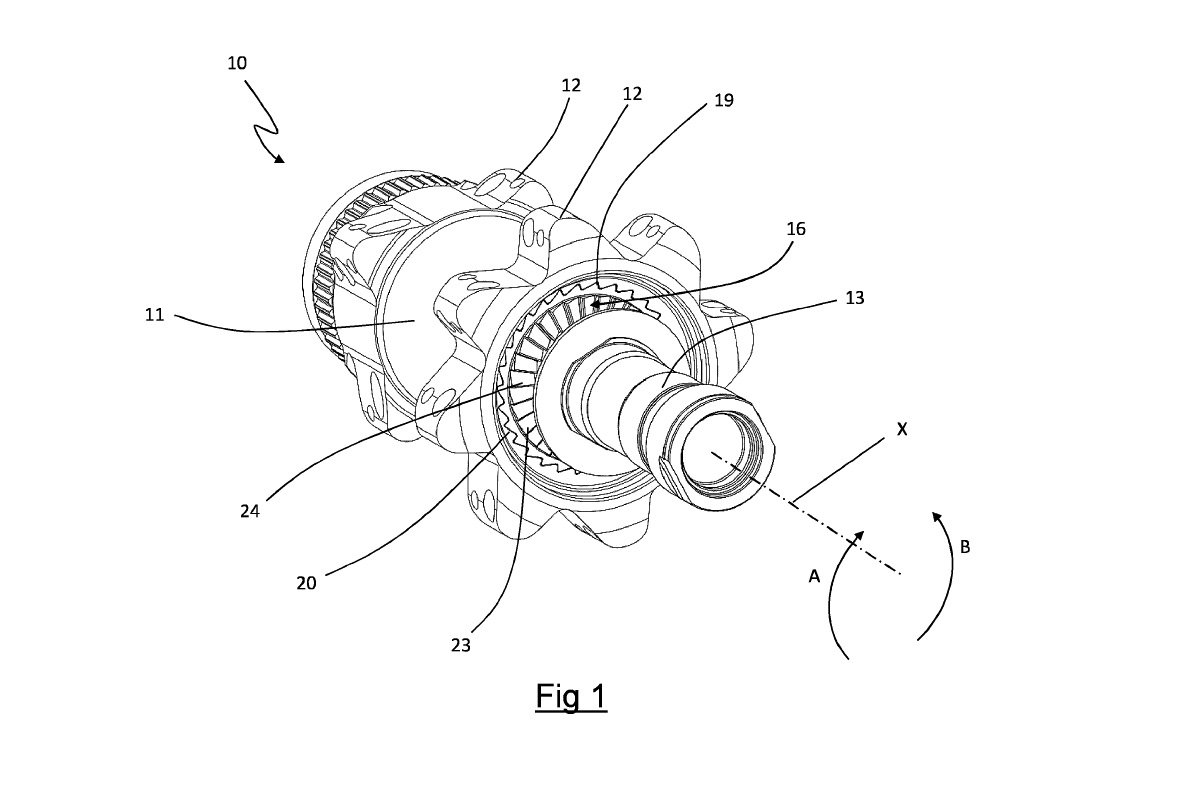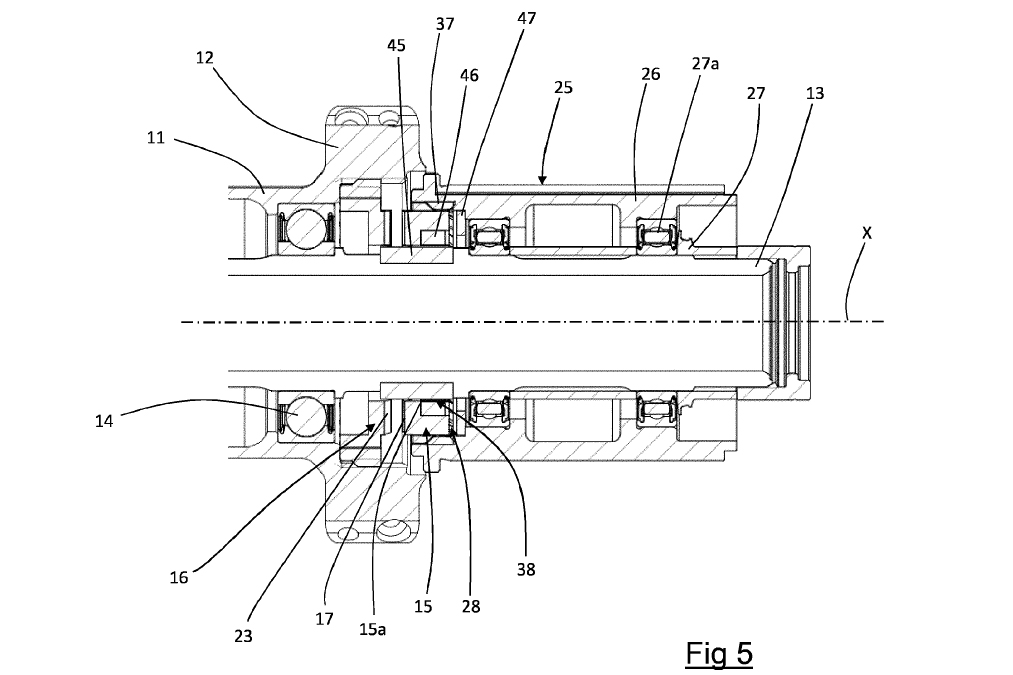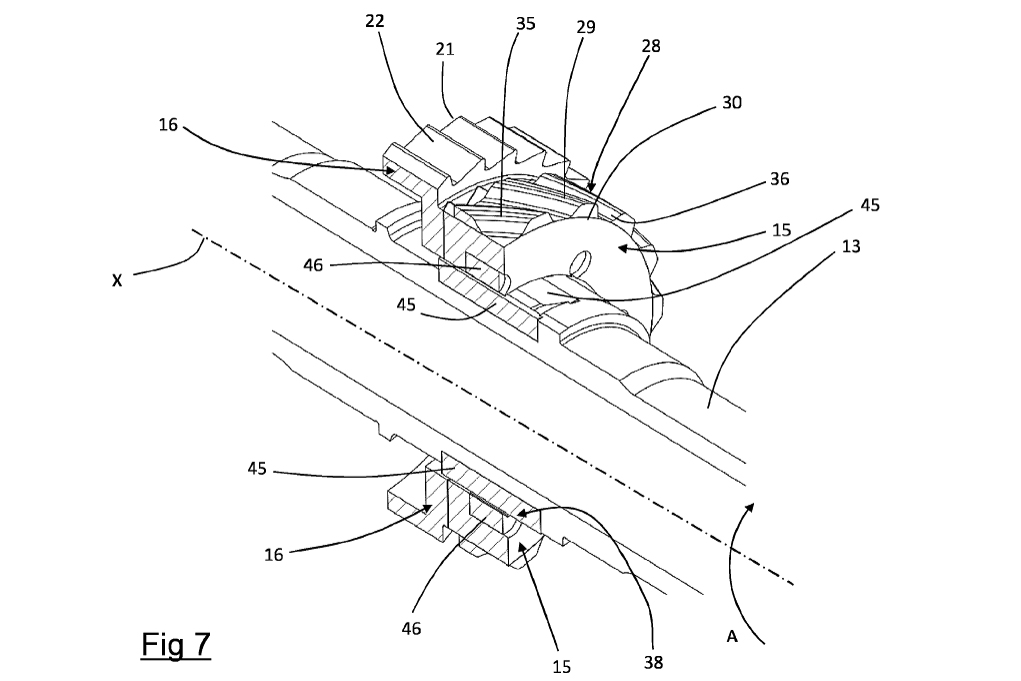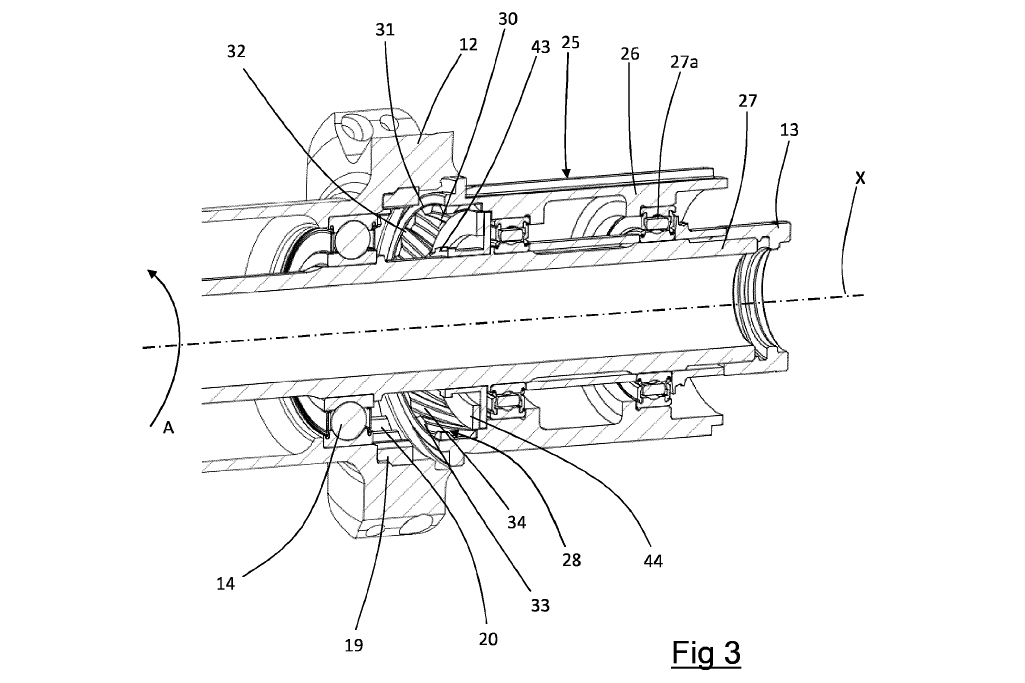We’re always patrolling for patents, and just stumbled upon a brand-spanking-new freehub design from Campagnolo. Instead of relying on a traditional ratchet and pawl system, it uses an innovative clutch and magnet arrangement – which appears to be an attempt to eliminate freehub drag.
Campagnolo Clutched Freehub Patent
If it seems like we’ve been covering a lot of new patents from Campagnolo, it’s because they seem to be on a mission to innovate and regain a sizable portion of the market. Their latest filing isn’t necessarily earth-shattering, but it addresses a potential efficiency gain that’s often overlooked: freehub drag.
As with many patents, the language is complicated – and may be further exacerbated by language translation (Campagnolo is, after all, Italian). For example, they refer to the hub shell as a “hub sleeve”, and the axle as a “hub pin”.
Buried in the patent is what appears to be the key issue being addressed, which is the drag caused by traditional freehub systems:
“…results in a dissipation of kinetic energy of the rear wheel that can even be of the order of about 2 Watt at speeds of about 50 Km/h when the cyclist stops applying propulsive action. Such a dissipation of kinetic energy has a negative impact on the performance of the cyclist, forcing him/her to make greater effort to compensate for the kinetic energy dissipated.”
Rather than relying on pawls, ratchets, or ring drives – the Campy design uses magnet-operated clutches for engagement.
“When the cyclist interrupts the propulsive action, the second annular body pushes the first annular body (by means of the interference between the crown gears of the two annular bodies) in an axially outer direction decoupling the cassette from the second annular body (and thus from the hub sleeve). The first annular body thus reaches a free wheel configuration.
The Applicant has perceived that by arranging coupling members that axially translate the first annular body towards the second annular body in the case in which there is a rotation of the cassette with respect to the first annular body, the first annular body remains stably in the free wheel configuration (and does not tend to go back into the motion transmission configuration) until the moment when such relative rotation takes place.
The Applicant has found that by arranging magnetic members that oppose the rotation of the first annular body with respect to the hub pin, the first annular body moves axially towards the second annular body (and thus towards the motion transmission configuration) only when the cyclist starts the propulsive action again.”
No word yet on if or when this new hub will hit production – nor the actual watts saved. We will continue to follow the story for further developments.





